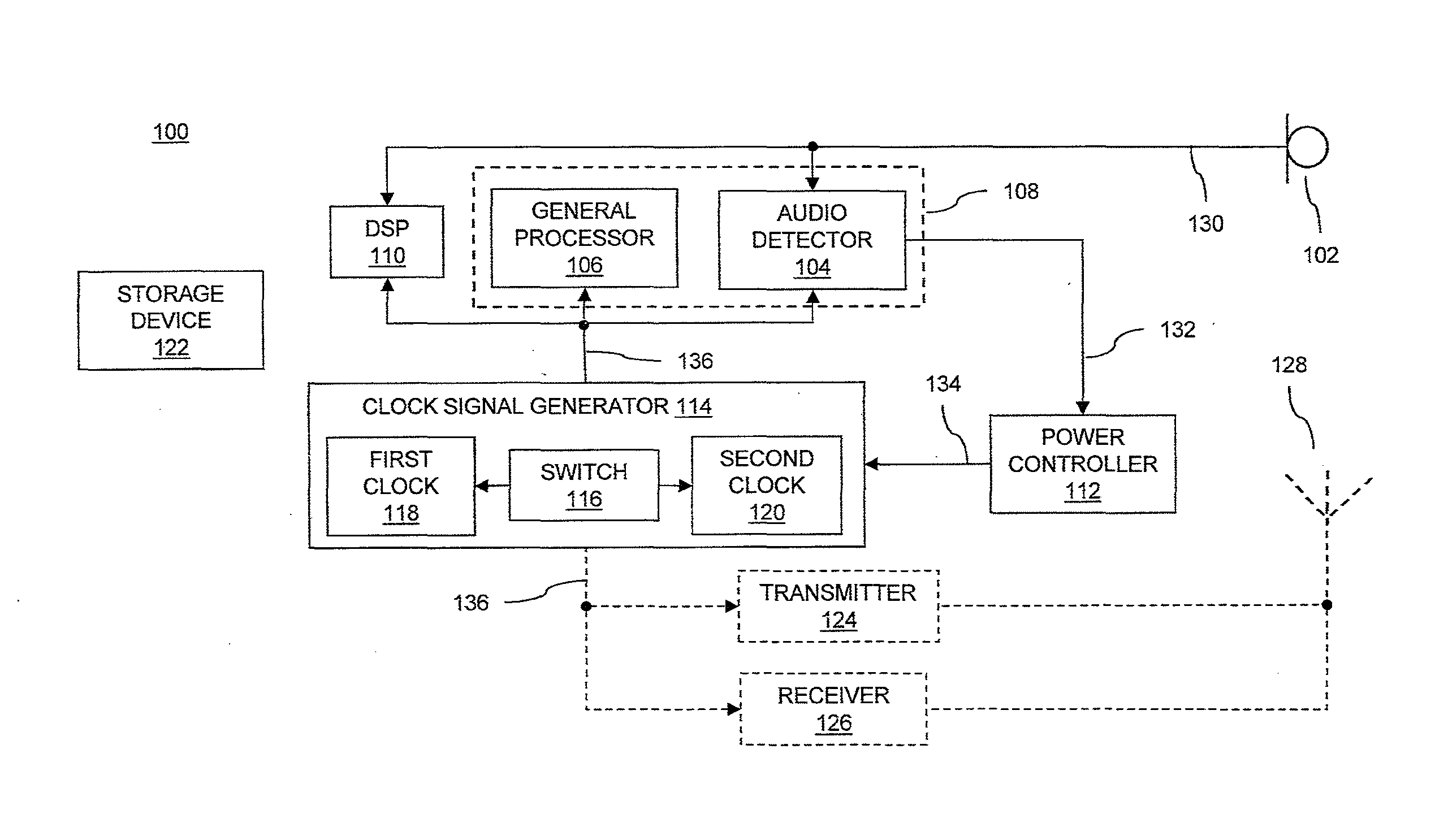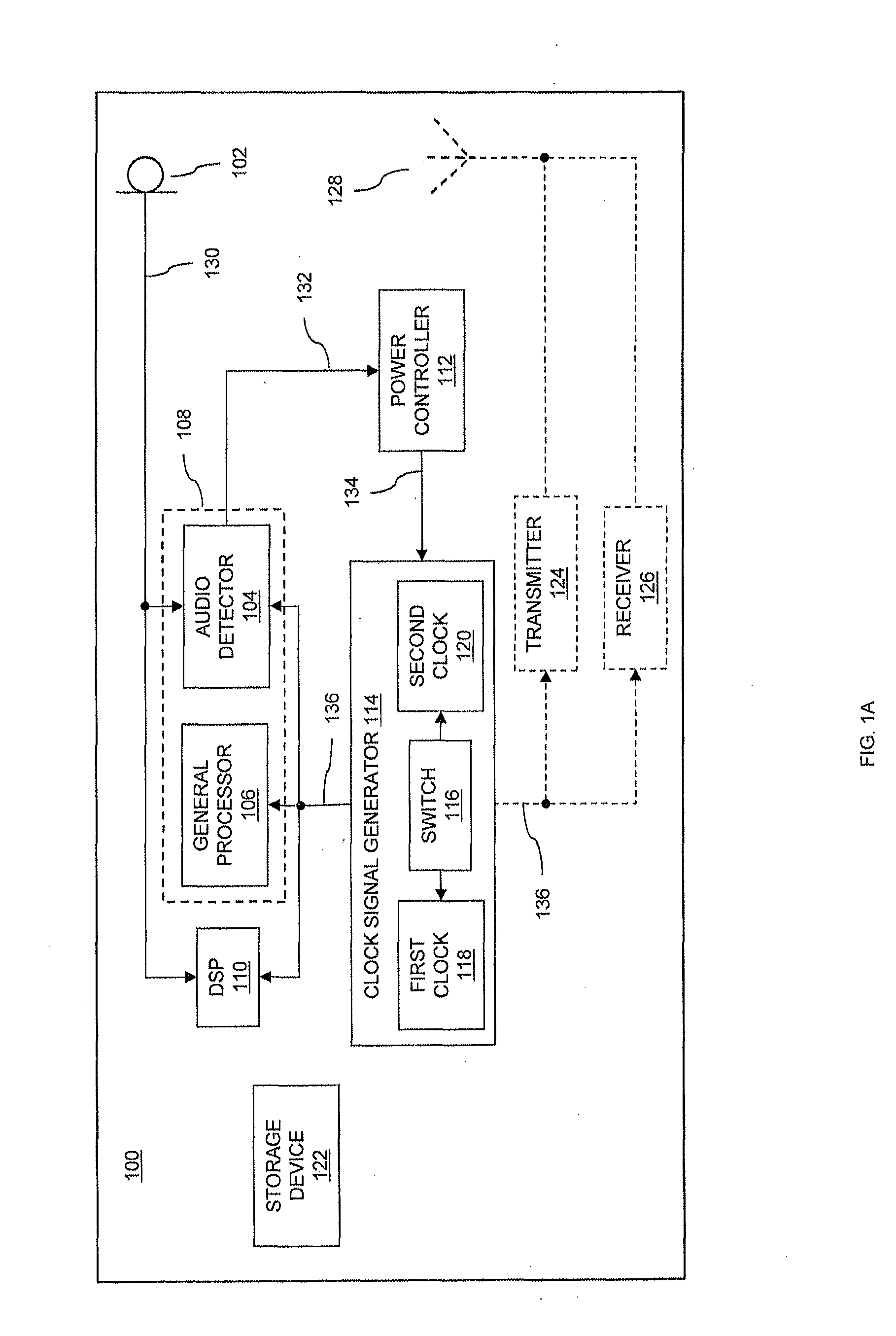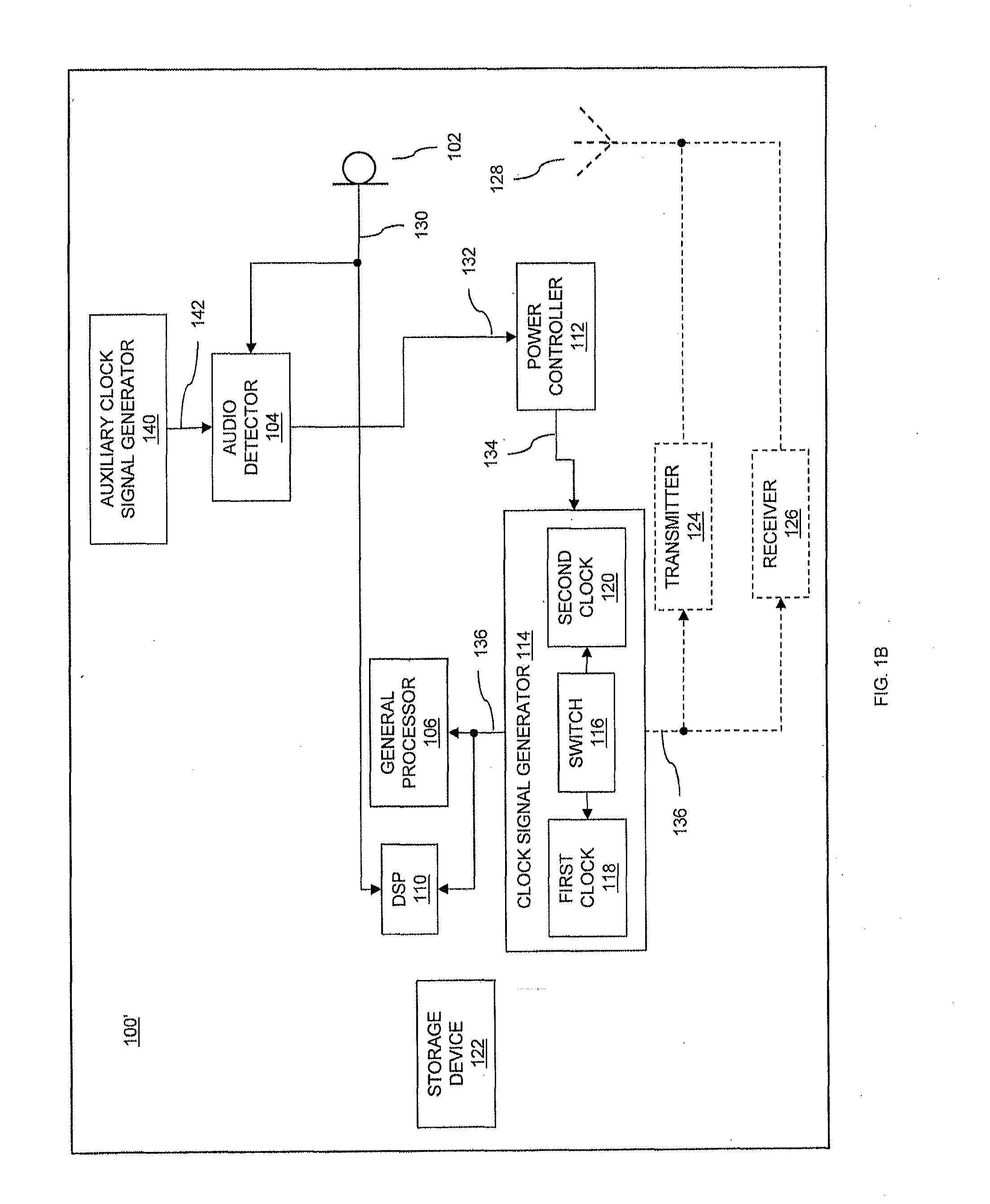Low power audio detection
a low-power audio and detection technology, applied in speech analysis, speech recognition, instruments, etc., can solve the problems of increasing the power consumption of the device, unable to detect the audio of interest, and a limited energy supply of the devi
- Summary
- Abstract
- Description
- Claims
- Application Information
AI Technical Summary
Benefits of technology
Problems solved by technology
Method used
Image
Examples
Embodiment Construction
[0011]As discussed above, conventional devices may process an audio signal to detect audio of interest. Devices may, for example, use conventional voice recognition techniques to continually process the audio signal for audio of interest. These techniques, however, may result in relatively high power consumption. One alternative technique may be to periodically process a small burst of audio. For example, 10 ms of audio may be sampled every 100 ms to determine whether any audio of interest is present.
[0012]Other techniques that may be used to indicate the start of audio of interest include direct input by a user to an input component of the device, such as a push-button. However, this may require that the device be accessible to a user and that it be equipped with a suitable input component. Furthermore, button presses may interrupt a smooth user experience. As another example, some devices may use a simple electronic threshold detection (i.e., a noise gate) to indicate the start of...
PUM
 Login to View More
Login to View More Abstract
Description
Claims
Application Information
 Login to View More
Login to View More - R&D
- Intellectual Property
- Life Sciences
- Materials
- Tech Scout
- Unparalleled Data Quality
- Higher Quality Content
- 60% Fewer Hallucinations
Browse by: Latest US Patents, China's latest patents, Technical Efficacy Thesaurus, Application Domain, Technology Topic, Popular Technical Reports.
© 2025 PatSnap. All rights reserved.Legal|Privacy policy|Modern Slavery Act Transparency Statement|Sitemap|About US| Contact US: help@patsnap.com



